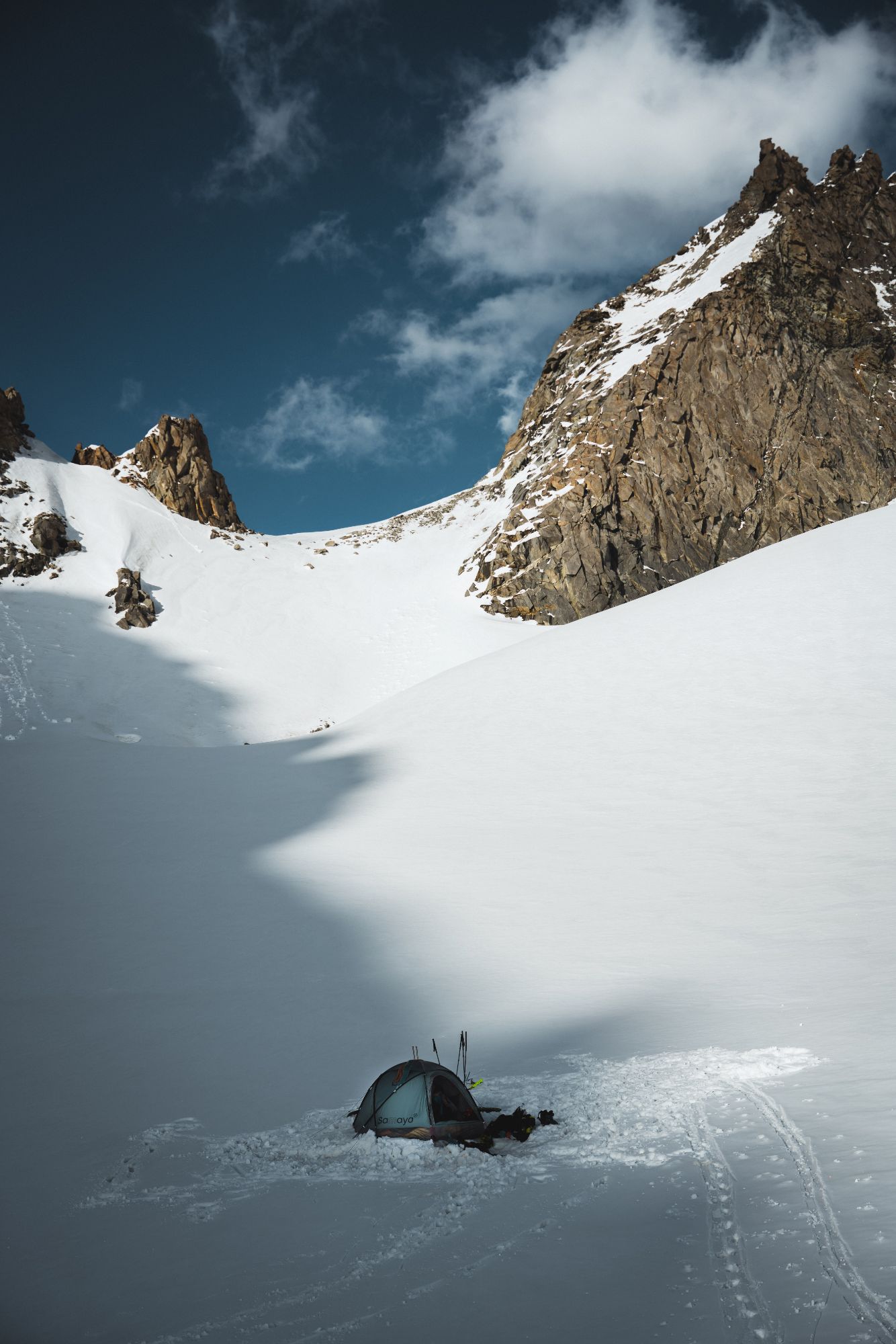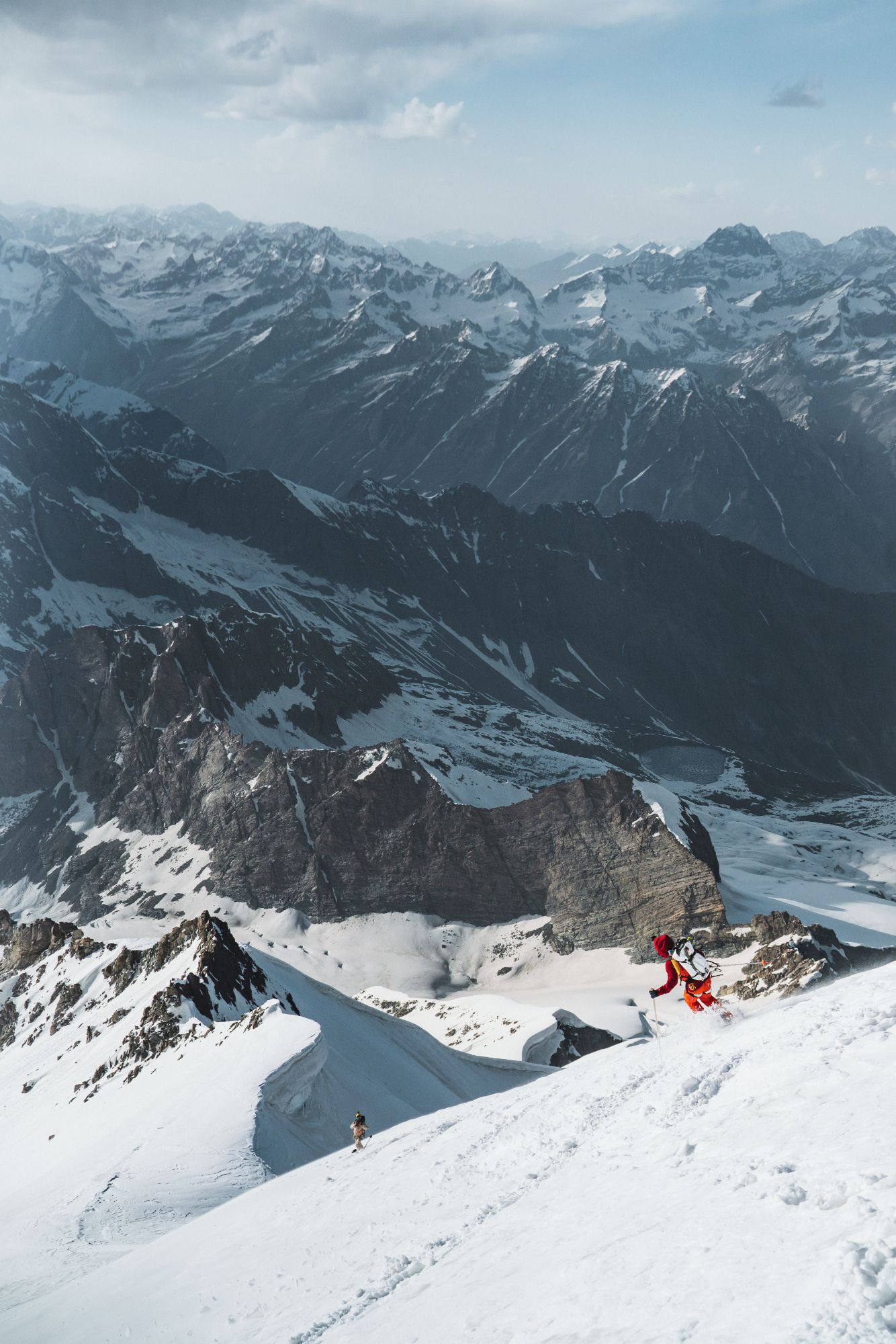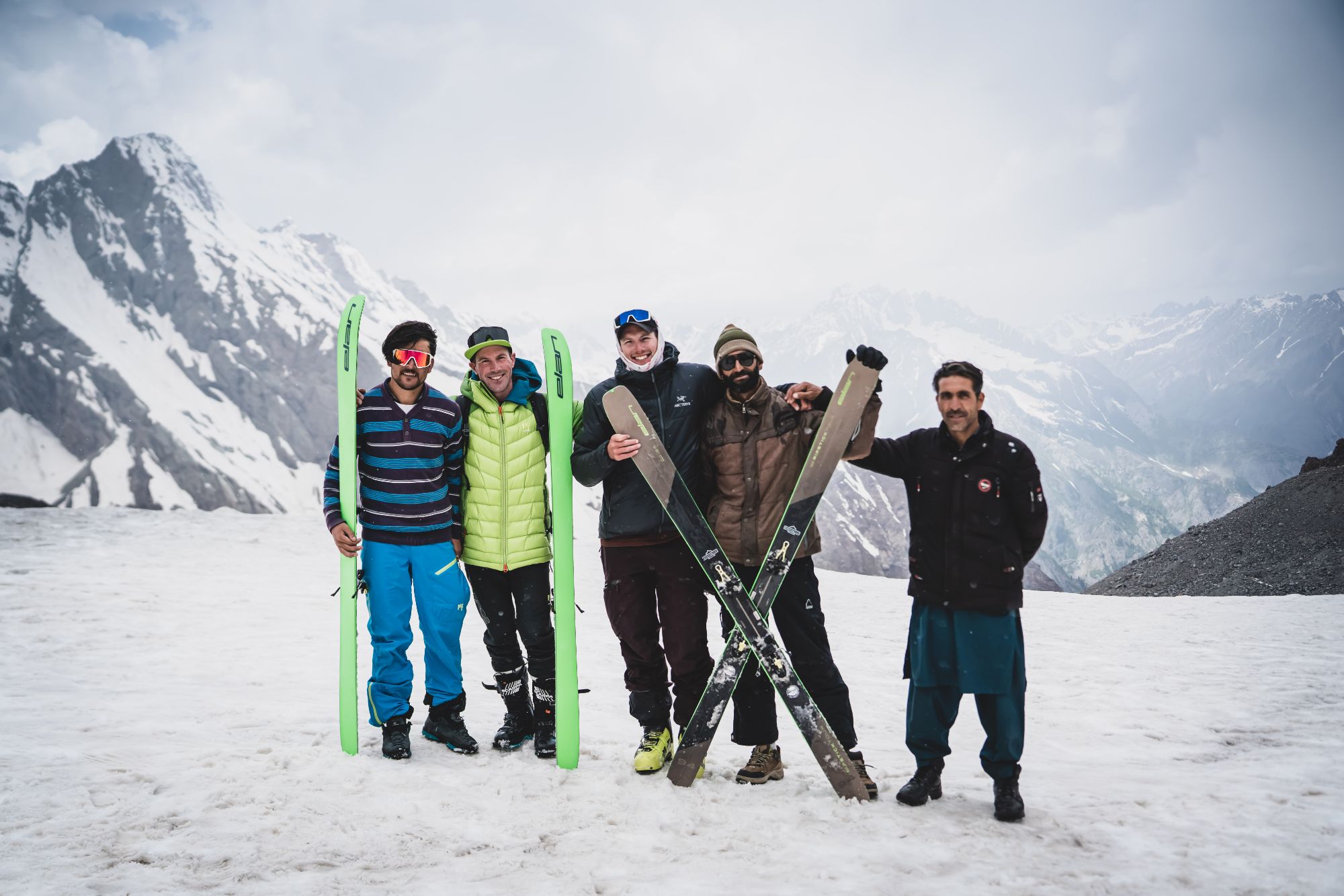Words & photography: Aaron Rolph
With: Tom Grant, Bine Žalohar
Having had a couple of expeditions abroad already curbed this year, I have to say the idea of a big ski project in Pakistan was pretty exciting. While perhaps Pakistan is known more for its cricket than skiing, the muslim state is home to three great mountain ranges and several of the world’s highest peaks. You’ll forgive my surprise then when we get hit with a wall of heat and almost 40 degrees air temperature when landing in Pakistan’s capital, Islamabad. Our summit team consisted of the Bine Žalohar, the brains behind the expedition and ex-pro freestyle skier turned ski mountaineer, Tom Grant, highly experienced steep skier and IMFGA mountain guide and myself, a full-time adventure athlete who happens to be handy with a camera. Joining us on the expedition was pro freeride skier, Juliette Willman plus expedition and arctic Doctor, Beth Healey who would be looking to ski other objectives in the same area. Our all-star Chamonix-based team had no shortage of talent and although here to get a job done, certainly didnt take themselves too seriously.
We spent the first couple of days exploring the beautiful green metropolis of islamabad, a city I was previously familiar with invariably popping up in the news. Although bustling, even a little intense in places, the capital is known for its high standard of living, cleanliness and safety. You were soon reminded however, that things worked differently here by the number of Kalashnikovs that casually patrolled the streets and were held by guards at the entrance of many of the buildings. That said, this soon becomes our new norm, relaxing as we chat to countless locals who are clearly keen to say hello and welcome us to their nation.
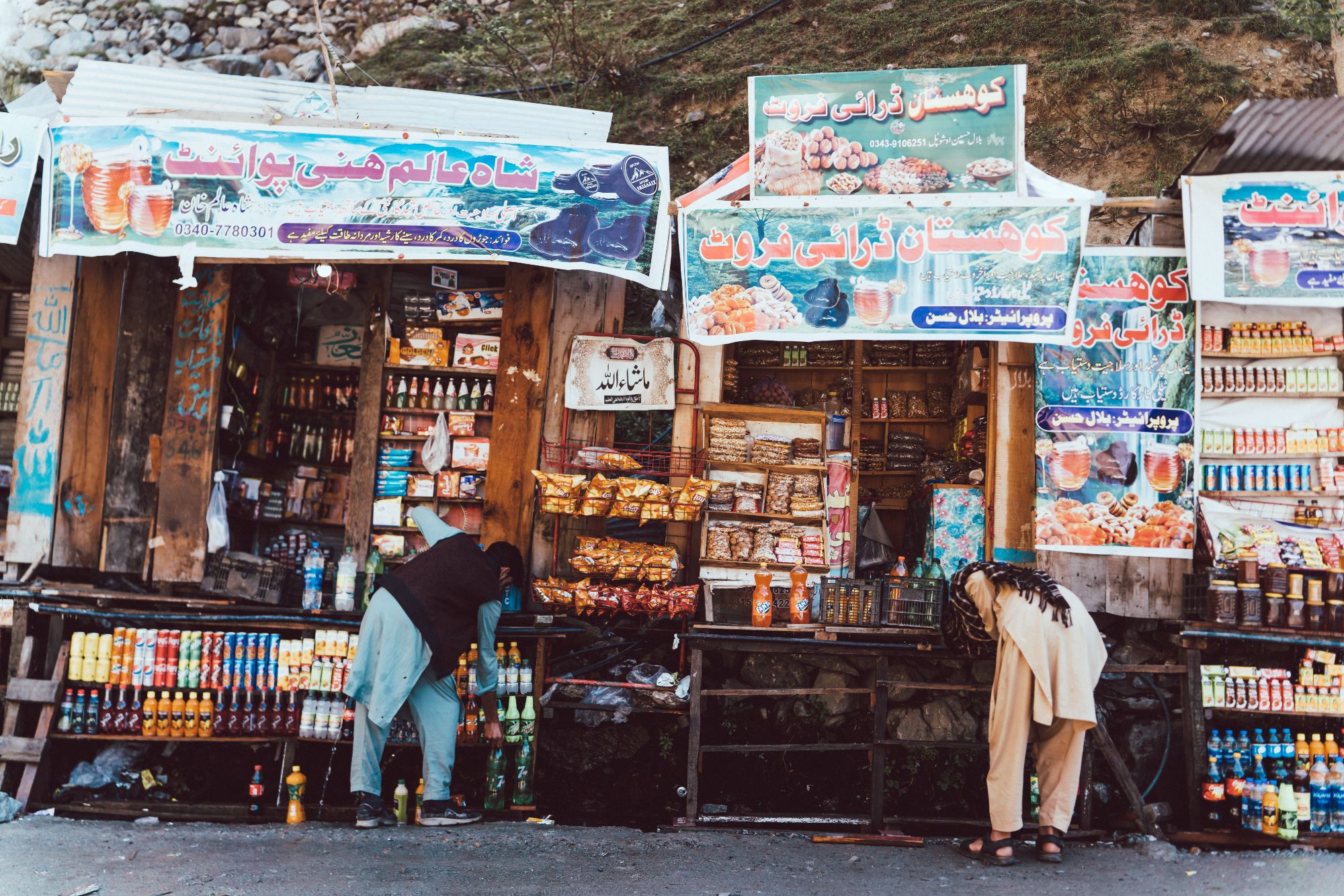
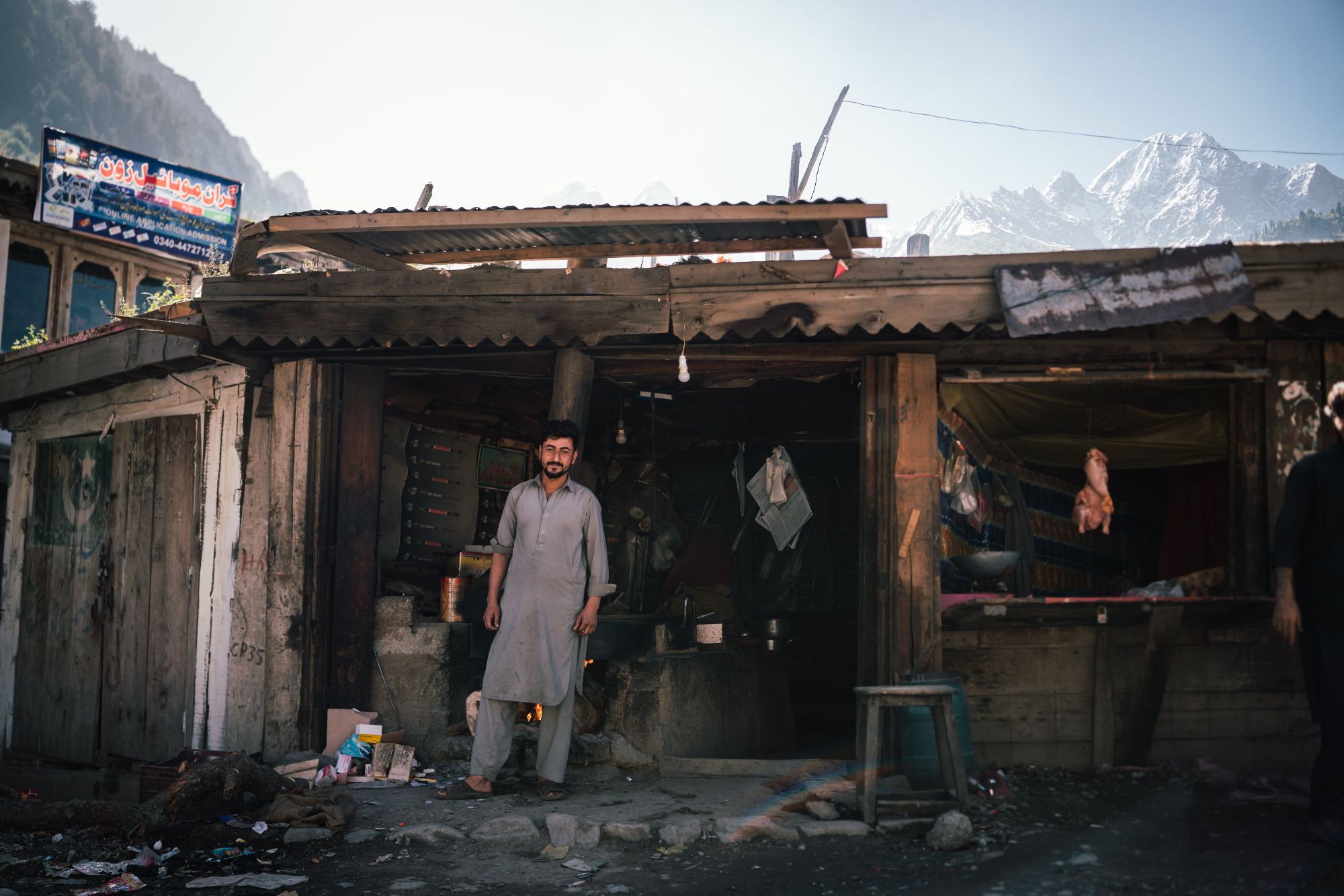
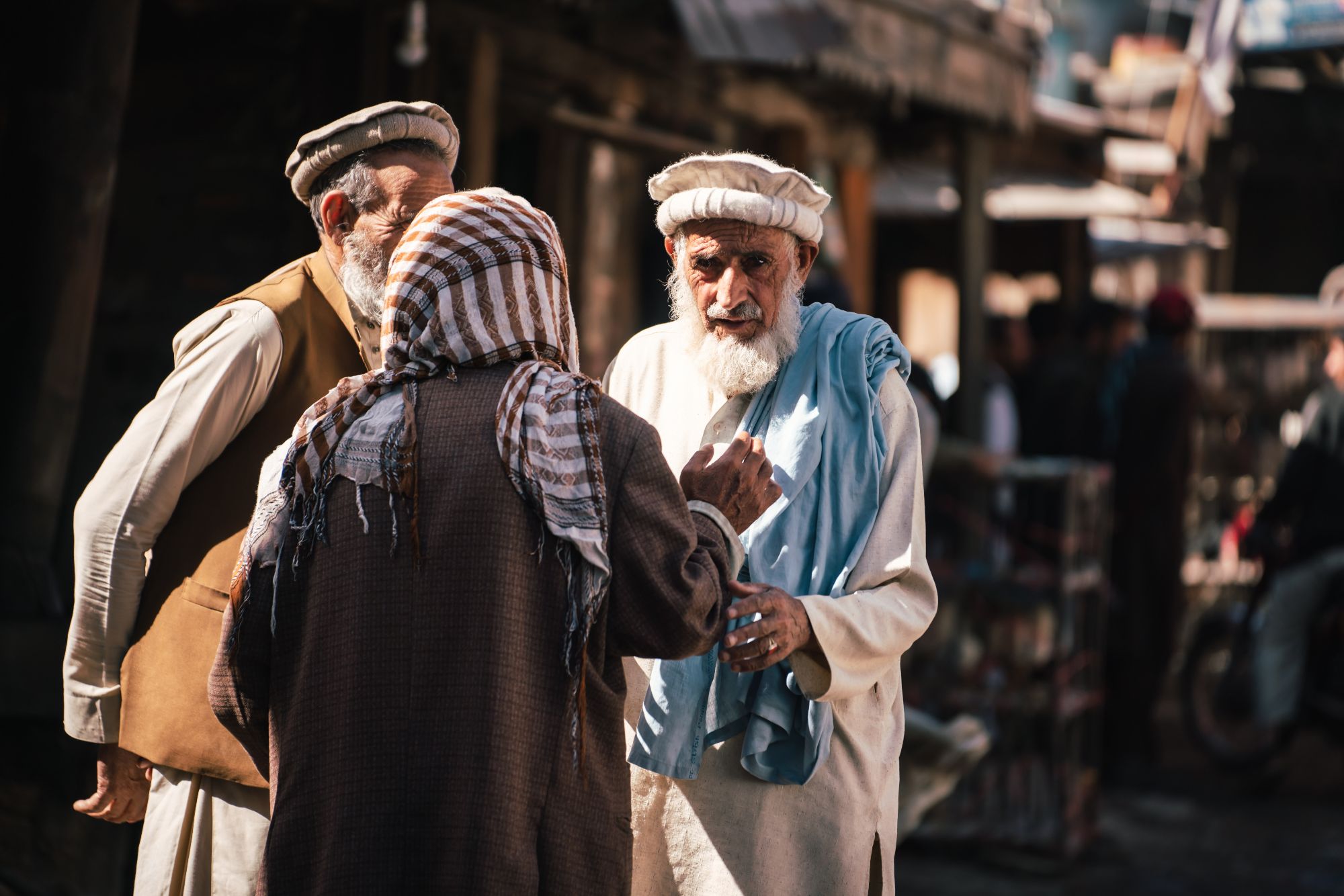
Eager to get into the mountains, we pack up and begin our 7-hour road trip towards the Hindu Kush range, and specifically the Swat valley. Arriving into the small but vibrant town of Kalam which lies where two glacial rivers converge up at 2000m, we rest up after the long journey while enjoying the comfort of the more temperate mountain climate. We enjoy some local cuisine between meetings with our expedition partners who are helping with basecamp logistics and organsiing porters to help carry in supplies.
All packed up, we’re on the move in fully-kitted out 4x4s over the rugged gravel tracks that pass through the remote but busy villages as we climb higher and higher. The enormity of our objective comes into sight and the grandeur of the mountain is becoming clearer. Standing at just shy of 6000m, Falak Sar is the highest peak in the Ushu valley and Swat region. The towering peak is a wonderuflly symmetrical pyramid, glistening with brilliant-white snow which contrasts starkly with the rich flouring forest in the fore. It’s amazing to think such an aethetic mountain has only ever been summitted successfully by a handful of people, and even more exciting that no one has yet skied it. With very limited information on the route and no detail on the condition of the mountain, we had a big adventure ahead of us! Could we be the first people ever to put ski lines on Falak Sar?
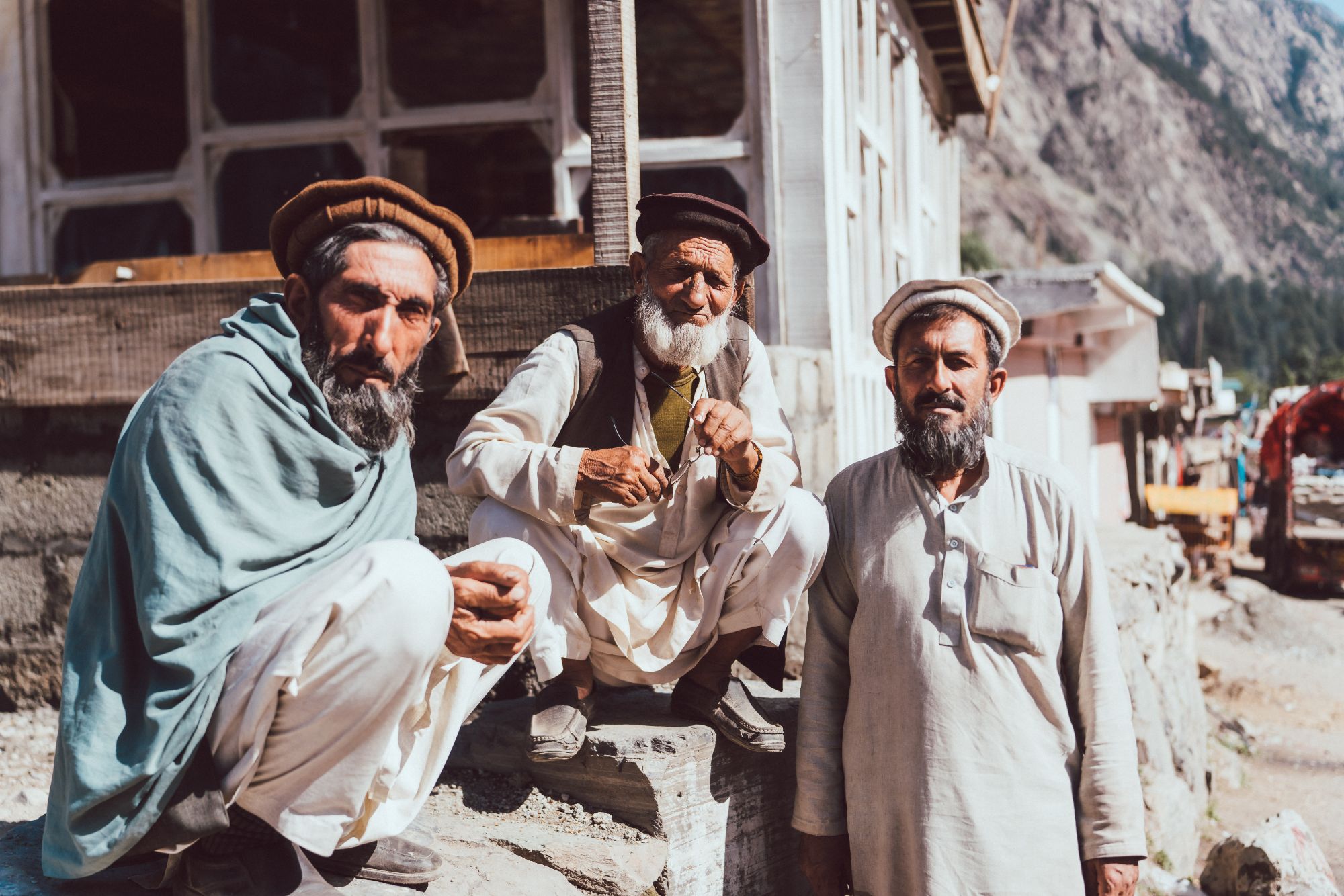
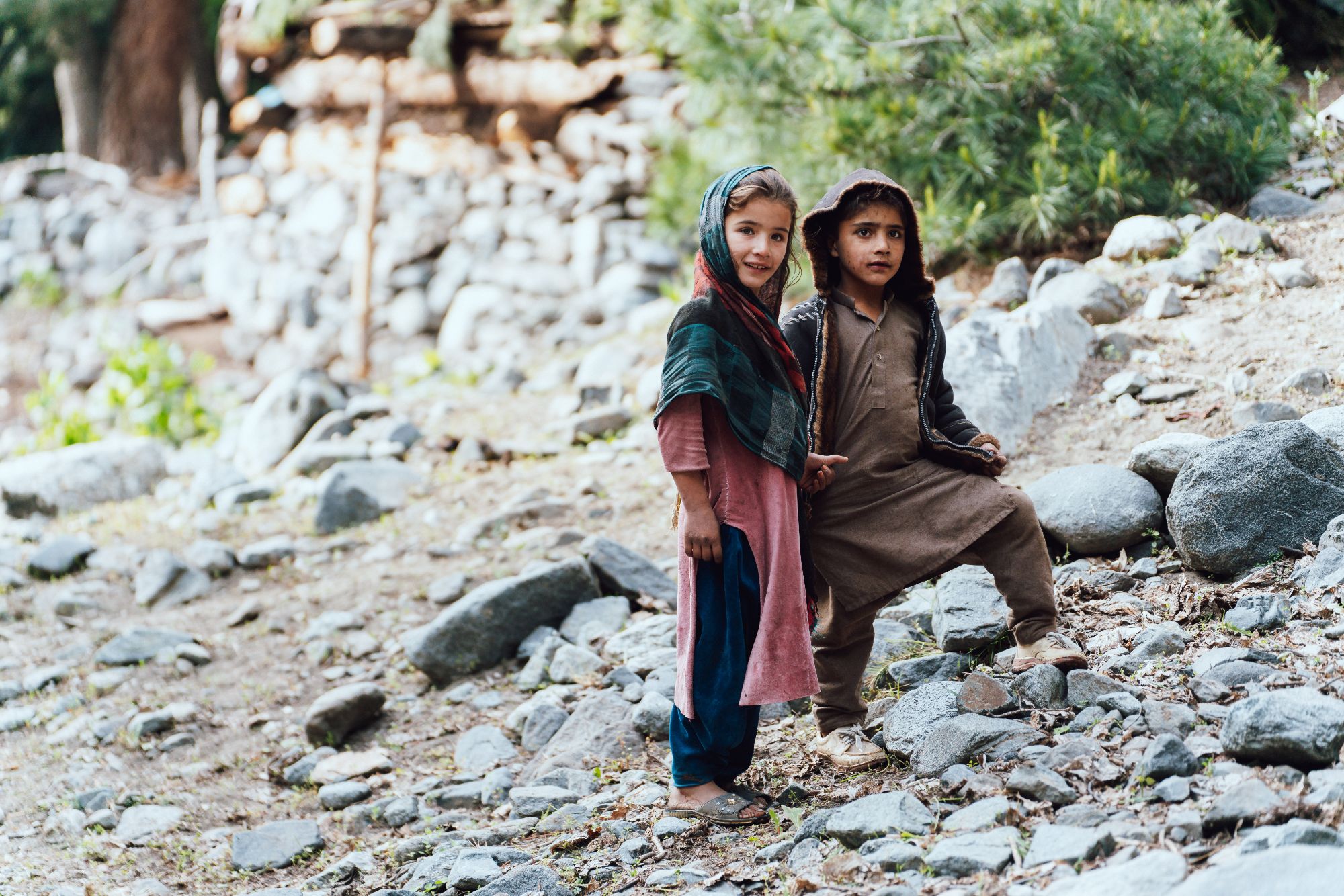
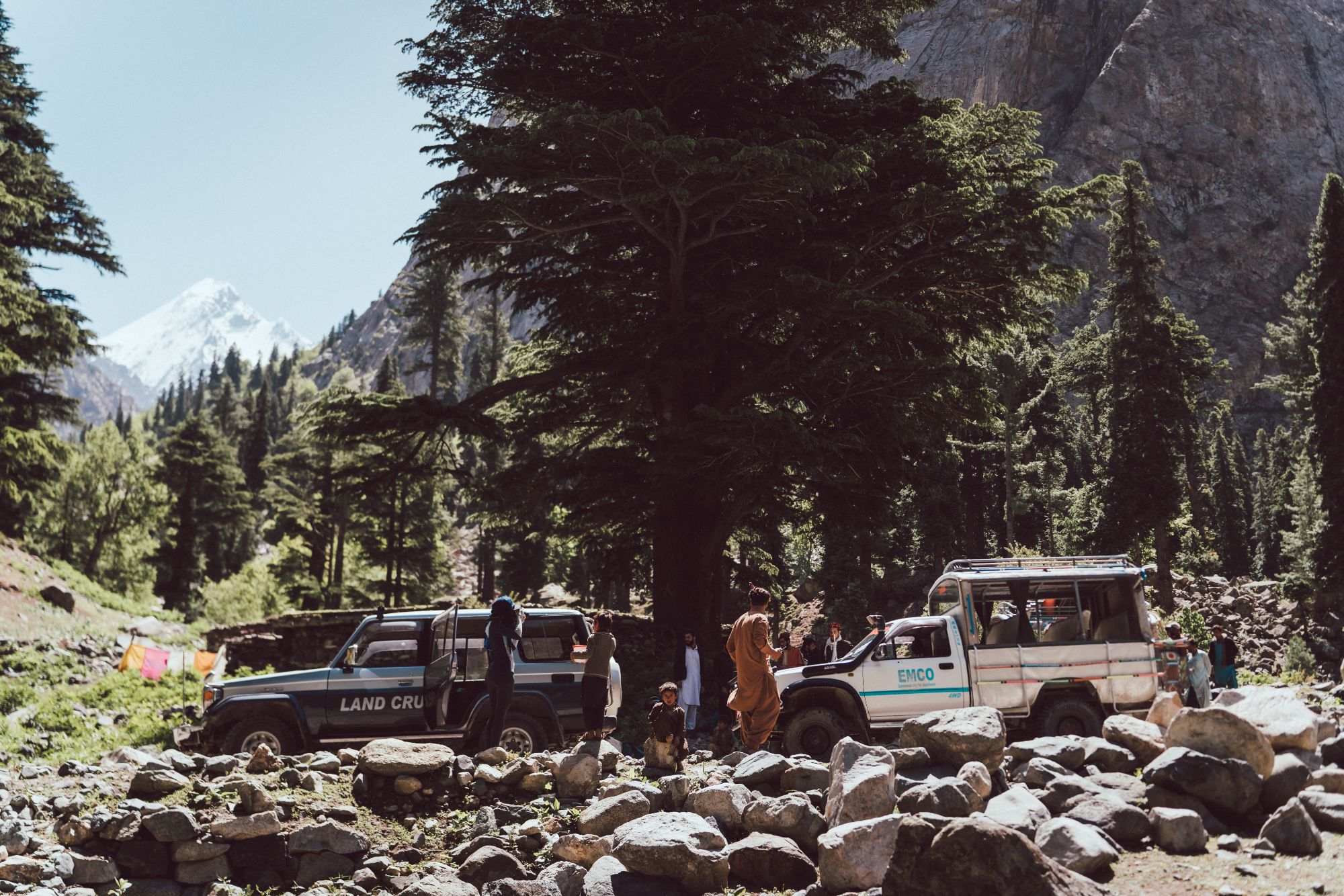
After dividing equipment and supplies into carriable loads, we begin the two-day hiking approach towards where we hoped to establish basecamp. Our team of porters, made up largely of young men from local villages seemed just as excited as we were despite the weighty loads. The following days would prove to be an essential part of our acclimbatisation program so it was essential to not let the excitement of this big project get the better of us. Generally moving smoothly at a modest pace will stand you in good stead for avoiding any undue sickness from the noticeable altitude increase. The forest trail meanders precariously above a a mountain stream which is brimming with beaitfully clear melt-water, a pleasant distraction from the heavy backpacks. The warm sun is soon replaced with cool evening air and finishing the day at a temporary camp spot, we share stories while keeping warm around a roaring campfire. The following morning starts with a steep and committing climb, and with no sign of a path, we carefully navigate over loose scree and rocks but before long the snow has arrived. If anything, the unsavoury conditions increase our tempo until we reach the rocky plateau that will become our home for the next two or three weeks.
Our basecamp setup was a step-up from what I was used to on previous expediitons. We had a few decent sleeping tents, a mess tent for eating and relaxing in and another tent for our expedition cook, Zaheer who would whip us some great dishes for our big ski days ahead. We were also joined by local guide, Ahmed, assistant cook, Nazir and even a local polceman, Sattar who although confident we were safe, decided to stick around to make sure. The following days, we created a wonderful bond, exchanging stories from our own cultures and laughing a lot together. After a complex history in previous after an insurgence of Taliban occupuration, it felt as though Pakistan had an unjust reputation as an unsavoury place. This was all in the past anbd the reality on the ground was that we’d met some of the warmest and kindest people anywhere in the world. I was clear this expedition was more significant than a summit or first ski descent, but was a way to show the world that Pakistan is open for business and a culturally rich and fascinating place. We weren’t just climbing for ourselves now but for the local people of the Swat region.
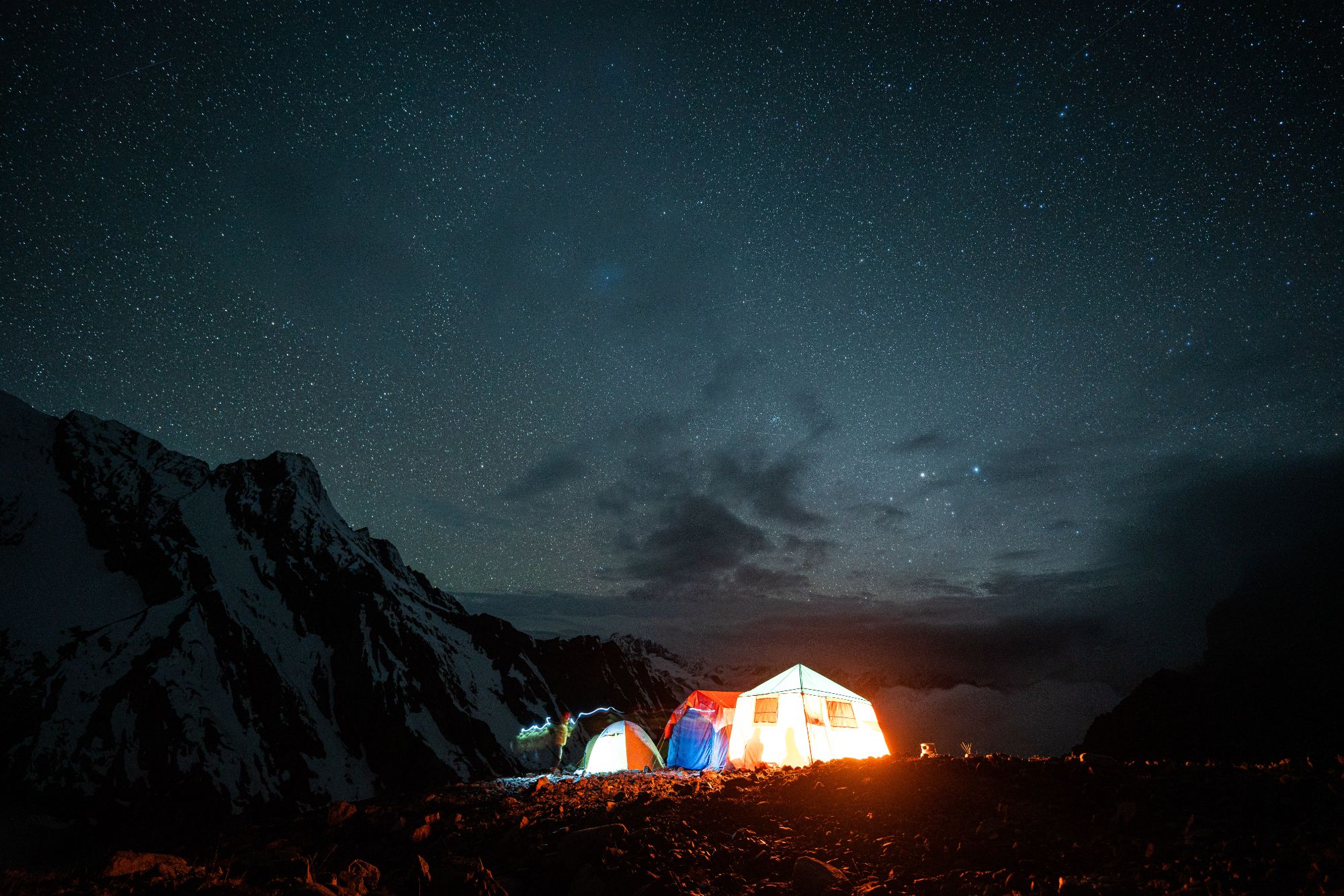
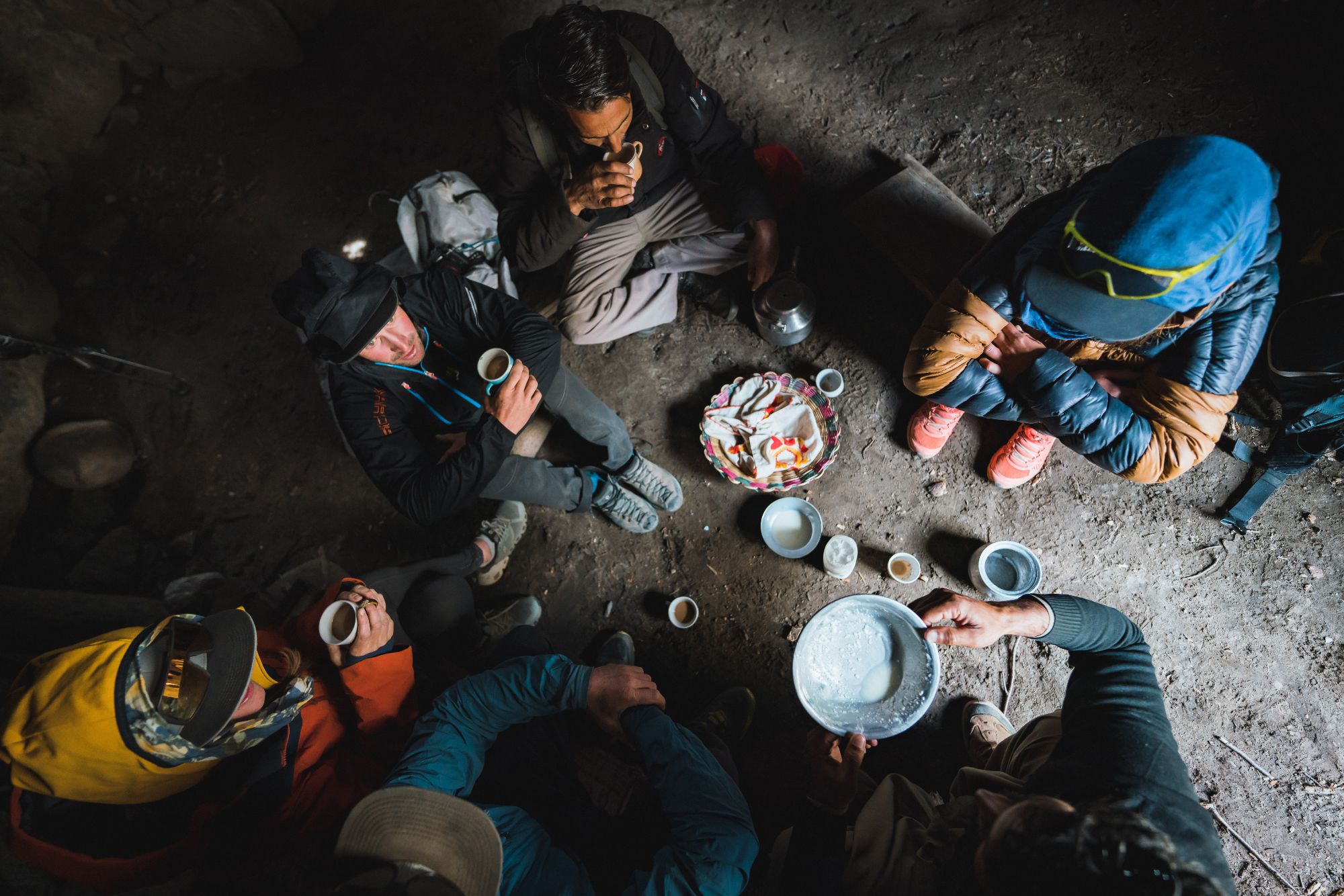
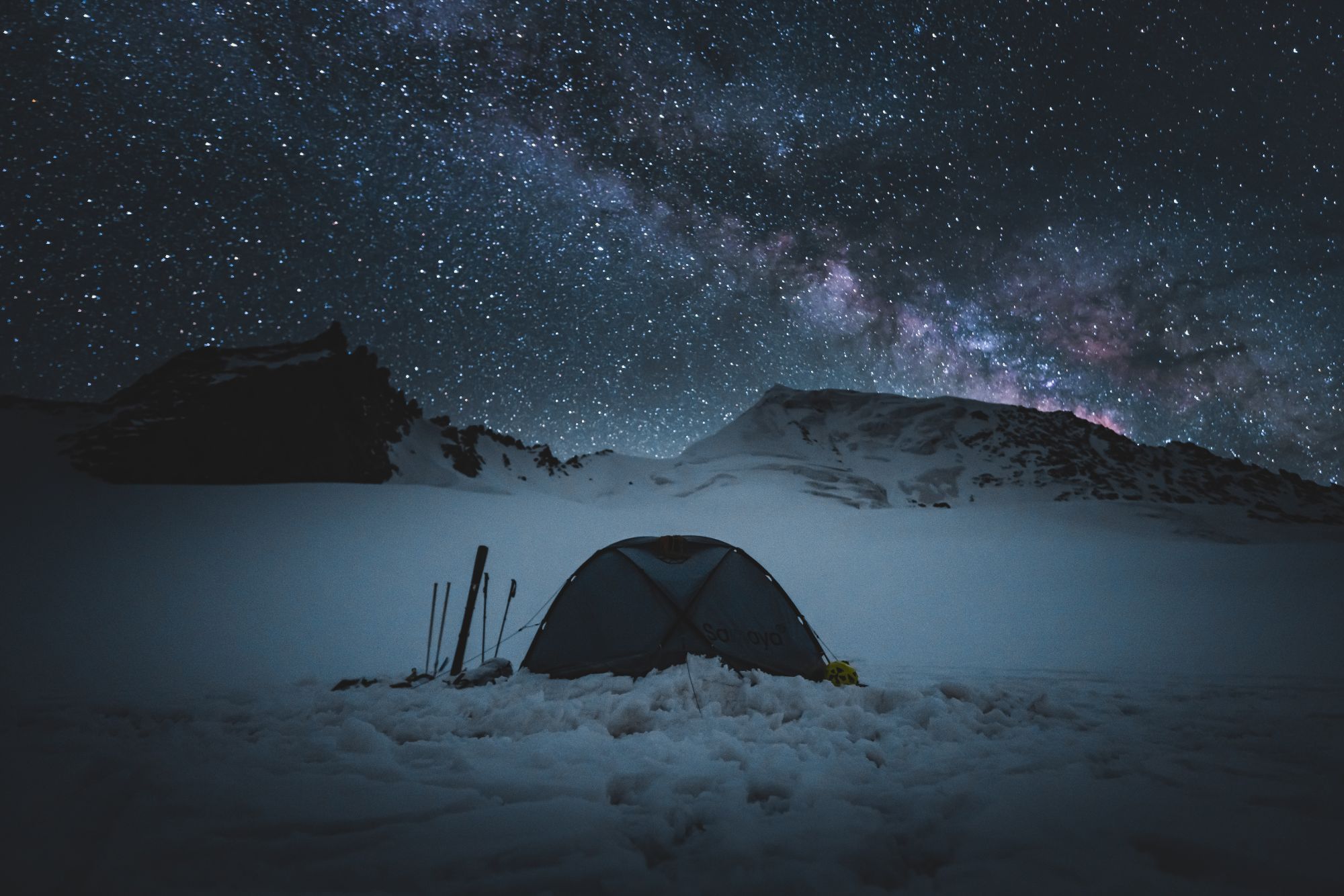
After some pretty dodge stomachs allround, most likely from the food between Islamabad and Kalam, we took some invaluable rest days and time to acclimbatise. The slow pace of basecamp life takes some getting used to but before long, we can see a weather window on the horizon. It looks like two bomber high pressure days that we could rely on for a summit bid, and although this had come sooner in the trip than we’d hoped it seemed too good an opportunity to pass up. We set about up the glacier to do our first kit drop on a moody grey afternoon. We’re weaving in and out of crevasses managing to keep our skis and climbing skins on for the majority of the glacier climb. We cache the loads we’d carried digging them into a snow pitt next to an easily recognisable crevasse, making the GPS location and head back down to camp.
The following day the conditions look good and it’s time to move up and establish advanced basecamp. The air is thin up at 5000m and with huge loads, we’re gasping for every breath of oxygen. Much to our relief, the glacier starts to plateau and we reach the spot we’ll spend the night. Removing our backpacks and setting up basecamp brings a palpable relief, although inspections of the face leave us concerned what condition tomorrow’s route is going to be in. We can ser very large patches of ice on the higher slopes where a fierce wind has scoured away the snow. We put this to the back of our minds however and try to take on enough food, melt snow and get some rest before our big day tomorrow.
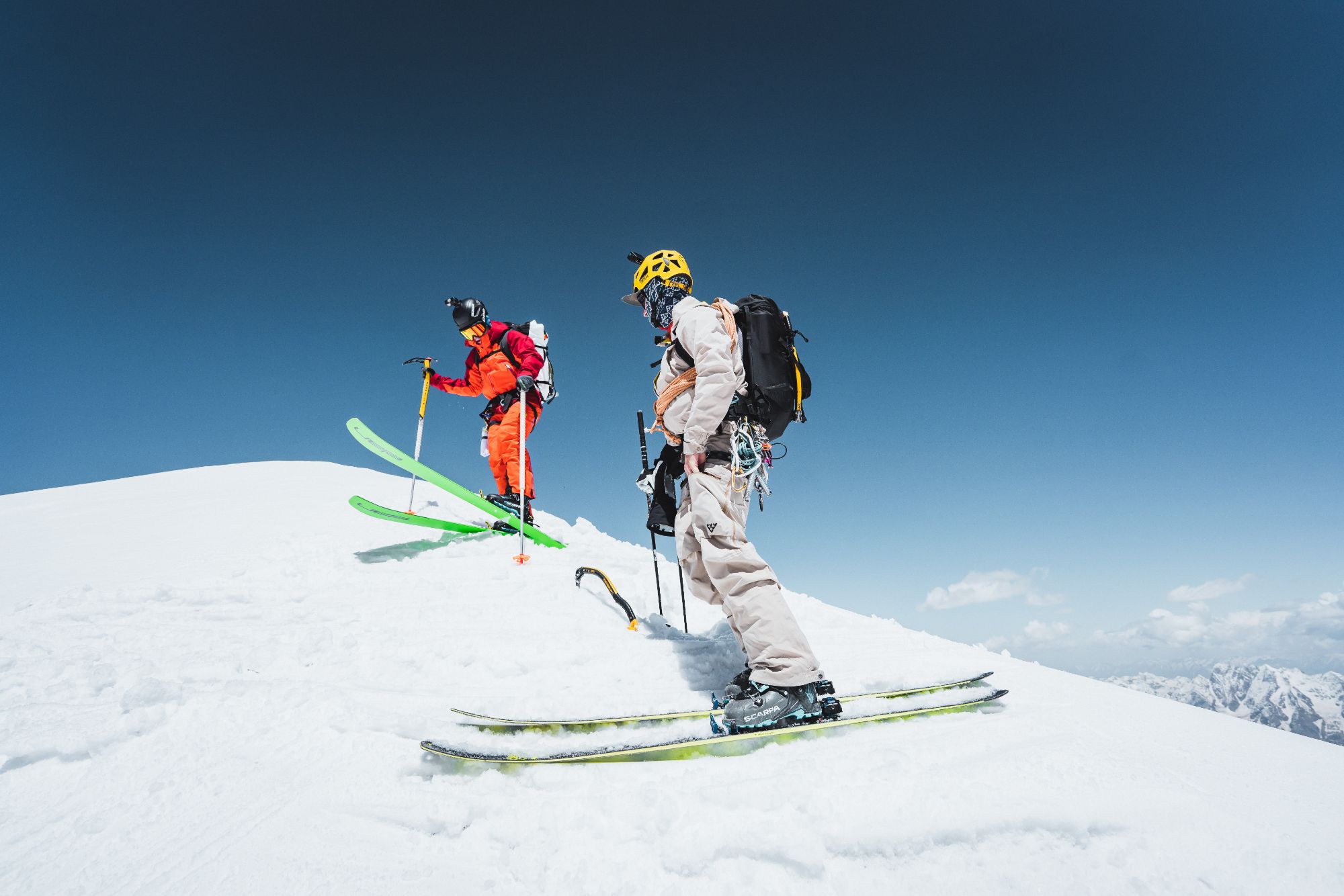
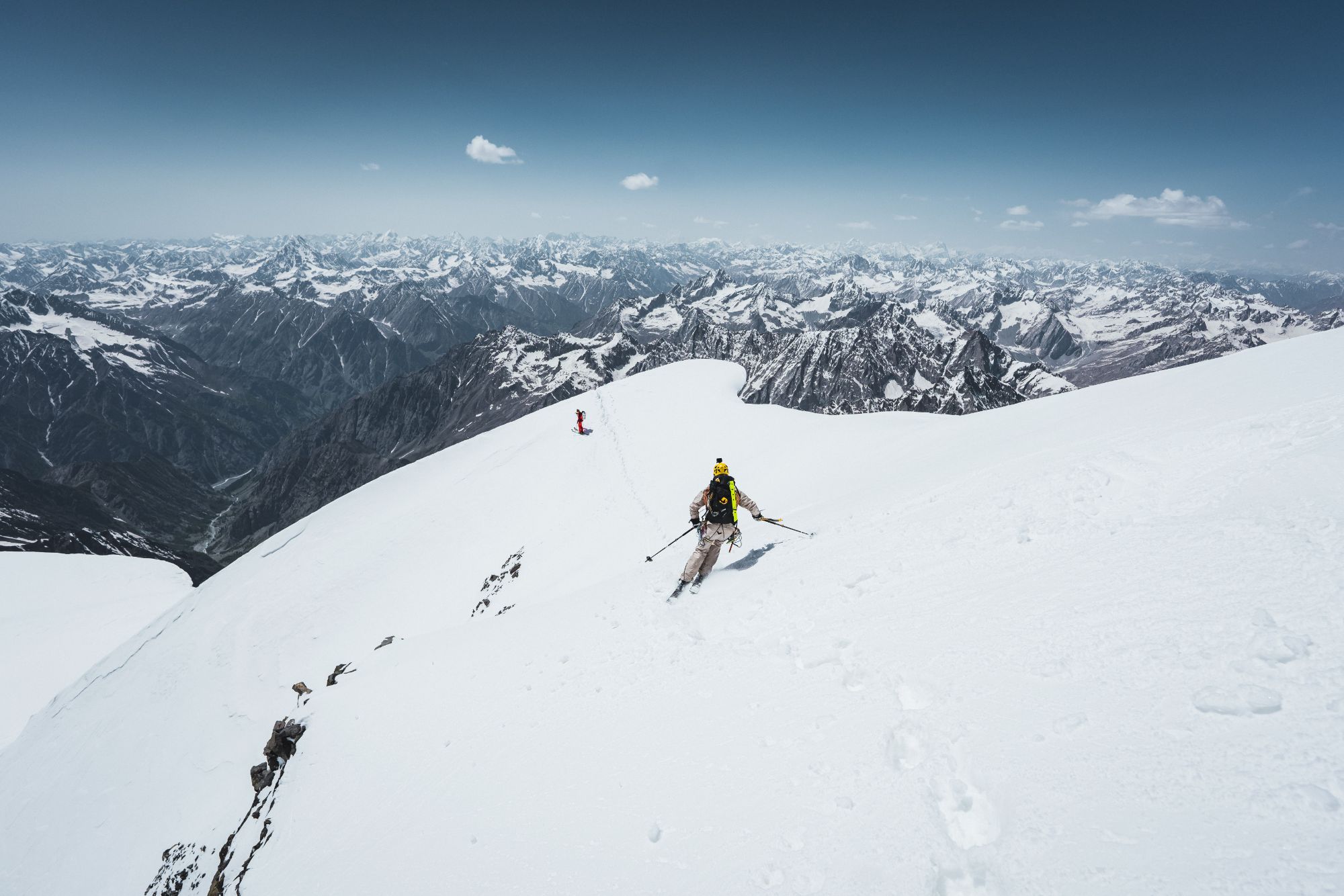
The “alpine start” never gets any easier for me, but the bitter northerly winds make this one especially unkind. Not yet graced with the warth of the alpine sun, any uncovered skin has the heat sapped away almost immediately. Despite the harsh conditions, we’re making good progress touring up the the first third of the face, soon reaching the ice pitches we were cocnerned about. Being sure to keep the rope taut, we steadily climb up the face with skis on our back, smashing our axes and kicking in our camproned-boots. So far so good, and although it requires our full physical and mental effort, we’re moving well. Tom is placing ice screws for security and I’m removing them as we go up roped together. After around ten hours of climbing, the summit is finally in sight and despite our burning lungs, we feel like we’re on top of the world. Taking our last few steps, we take the 360 summit vistas which reveals peaks as far as the eye can see at every direction.
Of course the top of a mountain is only half way, but I’ve never been so excited to clip into my skis. We take the obligatorty summit snaps and put in the first jump turns down the 50 degree slope which has soft snow that sluffs our skis. This whole area is complete a no fall zone, skiing above a hanging cliff where a mistake could cost us everything. Our confidence starts to build however, and moving onto the western ridge we’re shredding hard and feeling good until we reach the icey face. We knew we’d need to put in some abseils here so set about building an anchor with a v-thread into the ice and tied together our two ropes making for 50m rapells. Four time-consuming abseils later, we were back on our skis as the afternoon light was starting to glow softly. We knew it was plain sailing from here so could really enjoy the descent skiing hard, cheering as we went. We swiftly packed up our kit on the glacier and continued down. By now the sky is filling with orange and pink and pink hues, arriving back to basecamp just in time. The team are there to meet us, celebrating our summit and ski descent in style, all relieved to have us safely back to camp with a successful mission complete.
We spent the following days exploring the wider region which is rich in both nature and great people The locals of Kalam kindly hosted a party for us, celebrating the first ski descent of Falak Sar with local food, music and dancing. I’ve been fortunate enough to visit areas all over the world on expeditions of all sorts and have never experienced a warmer and kinder country of people – if you get a chance to visit this incredible region of Pakistan, you won’t regret it.
